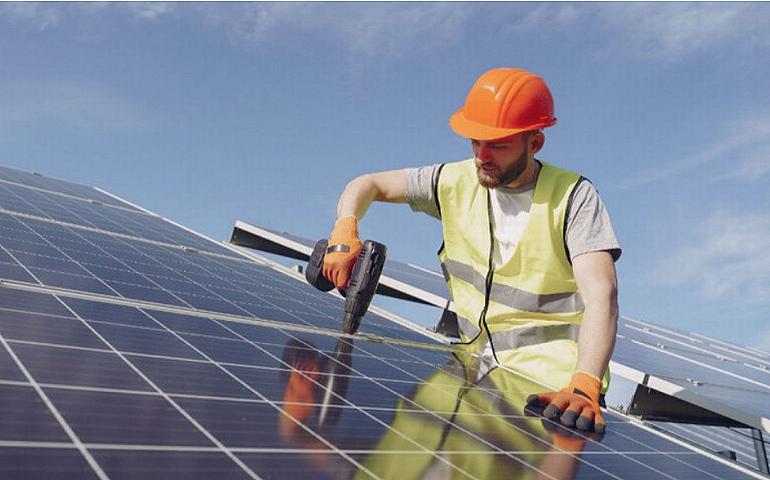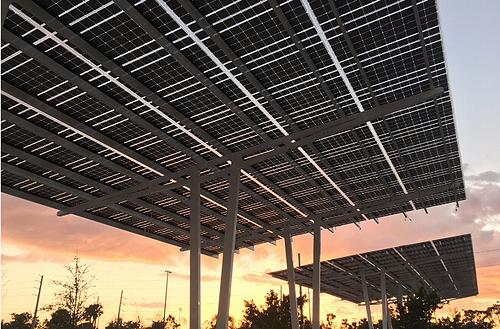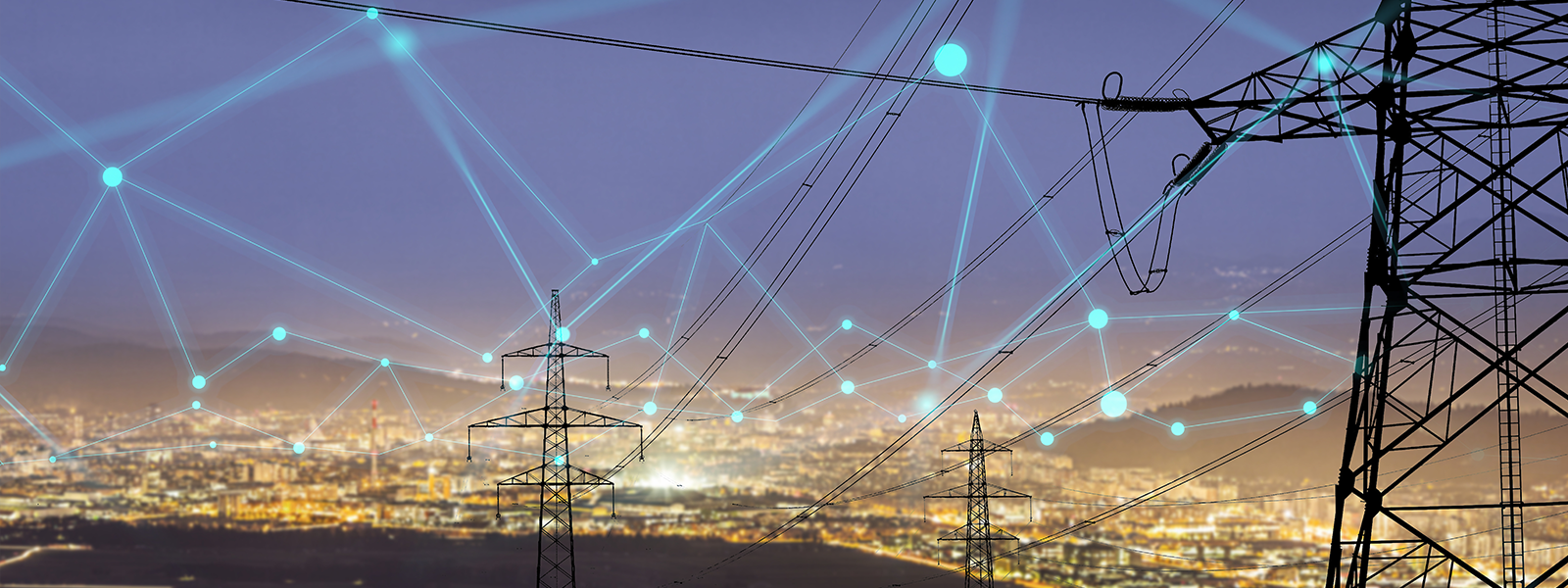Renewables Lead Europe’s Answer to Wartime Energy Crisis

Brasov City Hall is installing solar panels as it transforms the city into the “green capital of Romania,” investing in environmentally friendly solutions, with the help of non-refundable EU financing. One such project is a solar photovoltaic park in Stupini, which will provide 90 percent of the electricity needed for public consumption in the area. July 2023 (Photo courtesy Green Forum) Posted for media use
By Sunny Lewis for Maximpact
BRUSSELS, Belgium, November 18, 2023 (Maximpact.com Sustainability News) – The European Commission has approved a €3 billion Austrian plan to support companies facing soaring energy costs in the context of Russia’s war against Ukraine. For households and small businesses across Europe and Africa, solar power in the form of photovoltaic panels is a great help in surviving the energy crisis.
Commissioner Didier Reynders, in charge of competition policy, said Thursday, “The repercussions of Russia’s war against Ukraine continue affecting the economy of Member States and creating uncertainties. This €3 billion plan will allow Austria to cushion the impact of the current crisis on companies facing increased energy costs and especially on energy-intensive companies, by providing them with liquidity support, while limiting possible distortions on competition within the Single Market.”
The Austrian plan will be open to companies of all sizes and most sectors, with the exception of credit and financial institutions.
The plan was approved under the State aid Temporary Crisis and Transition Framework, adopted by the Commission on March 9, 2023 to support measures in sectors that accelerate the green transition and reduce fossil fuel dependencies in line with the Green Deal Industrial Plan.
The plan consists of two measures:
- limited amounts of aid to compensate companies for the cost increase of various energy sources; and
- aid for additional costs due to exceptional natural gas and electricity price increases.
Under both measures, the aid will take the form of direct grants.
For the first measure, the aid will not exceed €250,000 per beneficiary active in the primary production of agricultural products and €2 million per beneficiary active in any other eligible sector.
For the second measure, the overall aid per beneficiary will not exceed 50 percent of the eligible costs, up to a maximum of €4 million.
The beneficiaries may receive further aid, not exceeding 40 percent of the eligible costs and up to a maximum of €100 million.
Energy-intensive companies may receive aid up to 65 percent of the eligible costs for the maximum aid ceiling of €50 million.
Those energy-intensive companies that are active in particularly affected sectors, will be entitled to receive aid up to 80 percent of the eligible costs for the maximum aid ceiling of €150 million.
Under both measures, the aid will be granted no later than December 31, 2023.
The aid is subject to conditions, including safeguards to ensure that companies benefiting from higher aid amounts and intensities do, in fact. implement the recommendations of mandatory energy audit reports.
The Commission concluded that the Austrian plan is necessary, appropriate and proportionate to remedy a serious disturbance in the economy of a Member State, and on this basis, the Commission approved the aid measure under EU State aid rules.
Together with the amendment to the General Block Exemption Regulation that the Commission endorsed on the same day, the Framework will help to accelerate investment and financing for clean tech production in Europe.
The new Temporary Crisis and Transition Framework that the Commission adopted on March 9 provides for aid granted by Member States to partially compensate companies, especially intensive energy users, for additional costs due to steep gas and electricity price increases.
Well, that takes care of energy intensive companies in Austria.
What about the rest of Europe
Led by solar photovoltaics, renewable power growth is surging across the EU, driven by the energy crisis in which Europe finds itself and need to accomplish transition to renewables as quickly as possible to avert the worst consequences of climate change.
The International Energy Agency (IEA) reported in June that its experts expect global renewable capacity additions to soar by 107 gigawatts (GW), the largest absolute increase ever, to more than 440 GW in 2023. This is equivalent of more than the entire installed power capacity of Germany and Spain combined.

Solar architecture firm Lumos Solar integrates bifacial solar panels into its projects. Nederland, Colorado, United States, undated. Posted for media use
This unprecedented growth is being driven by expanding policy support, growing energy security concerns and improving competitiveness against fossil fuel alternatives, the IEA explains. These factors are outweighing rising interest rates, higher investment costs and persistent supply chain challenges.
Solar photovoltaic capacity, including both large utility-scale and small distributed systems, accounts for two-thirds of this year’s projected increase in global renewable capacity.
In response to higher electricity prices caused by the global energy crisis, policy makers in many countries, particularly in Europe, have actively sought alternatives to imported fossil fuels that can improve energy security.
This shifting focus created a favorable environment for solar PV, especially for residential and commercial systems that can be rapidly installed to meet growing demand for renewable energy.
These smaller distributed PV applications are on track to account for half of this year’s overall deployment of solar PV – larger than the total deployment of onshore wind over the same period.
Following two consecutive years of decline, onshore wind capacity additions are on course to rebound by 70 percent in 2023 to 107 GW, an all-time record amount, the IEA predicts. This is mainly due to the commissioning of delayed projects in China following last year’s Covid-19 restrictions.
Faster expansion is also expected in Europe and the United States as a result of supply chain challenges pushing project commissioning from 2022 into 2023.
But the offshore wind sector is slower to grow, and it is not expected to match the record expansion of two years ago due to the low volume of projects under construction outside of China.
The IEA forecasts that solar PV additions will continue to increase in 2024 while challenges remain for wind expansion. Without rapid policy implementation, global onshore wind additions in 2024 are expected to fall by around five percent from 2023 levels.
Declining PV module prices, greater uptake of distributed solar PV systems and a policy push for large-scale deployment are driving higher annual solar additions in all major markets, including China, the European Union, the United States and India.
The crisis triggered by Russia’s invasion of Ukraine has accelerated renewable energy deployment in the European Union, driving the bloc to urgently reduce its dependence on Russian natural gas imports.
Policy actions in many European countries has led the IEA to revise its forecast for renewable capacity additions in the EU in 2023 and 2024 upwards by 40 percent compared with before the war.
Rapid growth in distributed solar PV is the main reason for the more positive outlook, accounting for almost three-quarters of the EU forecast revisions. This is driven by high electricity prices that make solar PV more financially attractive and by increasing policy support in key EU markets, especially in Germany, Italy and the Netherlands.
Innovative Technology: Bifacial Solar Panels
A bifacial solar cell is any photovoltaic solar cell that can produce electrical energy when illuminated on either of its surfaces, front or rear. In contrast, monofacial solar cells produce electrical energy only when photons touch their front side.
The U.S. National Renewable Energy Lab says bifacial solar cells plus tracking boosts solar energy yield by 27 percent over monofacial solar cells.
The first bifacial solar cell is described in a 1960 Japanese patent by Hiroshi Mori, then working for the Hayakawa Electric Industry Co. Ltd.), which later became the Sharp Corporation. The first demonstrations of bifacial solar cells and panels were carried out in the Soviet Space Program in the Salyut 3 (1974) and Salyut 5 (1976) LEO military space stations.
By 2020, the ENF Solar directory of solar companies <https://www.enfsolar.com/> listed 184 producers of bifacial solar panels. According to the International Technology Roadmap for Photovoltaics, bifacial solar panels held a 20 percent share of the overall PV market and its forecast is that this share will rise to 70 percent by 2030.
In April 2022, Greek Prime Minister Kyriakos Mitsotakis inaugurated a 204-megawatt solar park built of bifacial solar panels by Greece’s biggest oil refiner Hellenic Petroleum, in the northern Greek town of Kozani. He promised to speed permits for renewable energy projects as the country seeks to move away from polluting and costly imported fossil fuels.
“This project is a symbol of the green transition both inside and outside the Greek borders. It is the largest solar power plant in South-Eastern Europe and one of the largest in the whole of Europe. Greece will become a leader in the sector of Renewable Energy Sources. It will adopt new innovative technologies,” Mitsotakis said at the inauguration ceremony.
Greece aims to double its installed capacity from renewables to about 19 gigawatts by 2030, as part of the European Commission’s drive to accelerate transition to renewables and end reliance on Russian gas by 2027 following Russia’s invasion of Ukraine.
European countries have introduced more policy and regulatory changes to ease permitting in the last 18 months than over the entire previous decade. Accelerating renewable energy deployment in Europe since 2021 has eased the economic impact of the energy crisis.
While permitting has become a key policy focus in Europe to accelerate the deployment of large-scale wind and solar PV, and early benefits are starting to be visible, the proposed policy changes are expected to have limited impact on the deployment of renewables in 2023 and 2024 compared with other drivers.
The IEA says it is installations of small-scale residential and commercial solar photovoltaics that are really driving the current surge in renewables.
The agency estimates that electricity consumers across the European Union will save €100 billion during the 2021-2023 period due to newly installed solar PV and wind capacity.
Low-cost wind and solar PV are on course to displace an estimated 230 terawatt-hours (TWh) of expensive fossil fuel generation over the 2021-2023 period, helping to reduce wholesale electricity prices in all European markets. Without these capacity additions, the average wholesale price of electricity in the EU in 2022 would have been eight percent higher, hurting consumers, businesses and government budgets.
Mini Grids for Africa
The World Bank has committed more than US$1.4 billion to mini grids over the next seven years, through 38 projects in 29 countries. The investment plans of the World Bank’s portfolio include the deployment of 3,000 mini grids by 2029, with the expectation of bringing electricity to more than 13 million people. This investment commitment is expected to include more than $1 billion of co-financing from private sector, government, and development partners.
Solar mini grids can provide high-quality uninterrupted renewable electricity to underserved villages and communities across Sub-Saharan Africa and be the least-cost solution to close the energy access gap on the continent by 2030, according to a February statement by the World Bank.
Climate action efforts can tap solar mini grids that offer a lower greenhouse gas emission alternative compared to diesel-fueled systems and kerosene-based appliances.
The World Bank’s “Mini Grids for Half a Billion People: Market Outlook and Handbook for Decision Makers” notes that to realize the full potential of solar mini grids, governments and industry must work together to systematically identify mini grid opportunities, drive costs down, and overcome barriers to financing.
“Kenya has deployed mini grids to serve communities that are not connected to the main grid,” said Davis Chirchir, Kenya’s Cabinet Secretary for Energy and Petroleum. “Currently we have about 62 mini grids that are fully operational and 28 which are under construction. We hope to deploy more mini grids to close the energy access gap and ensure universal access to electricity by 2030.”
In Sub-Saharan Africa, at least 568 million people still lack access to electricity. At the current rate of progress, 595 million Africans will remain unconnected in 2030.
“While Africa remains the least electrified continent, it also has the biggest potential for solar mini grid deployment,” said Gabriela Elizondo Azuela, manager of the World Bank’s Energy Sector Management Assistance Program. “Solar mini grids can reach populations today that would otherwise wait years to be reached by the grid.”
Overall, renewables are ascendent. The International Energy Agency predicts that cumulative world renewable energy capacity will reach over 4,500 GW at the end of 2024, equal to the total power capacity of China and the United States combined.


